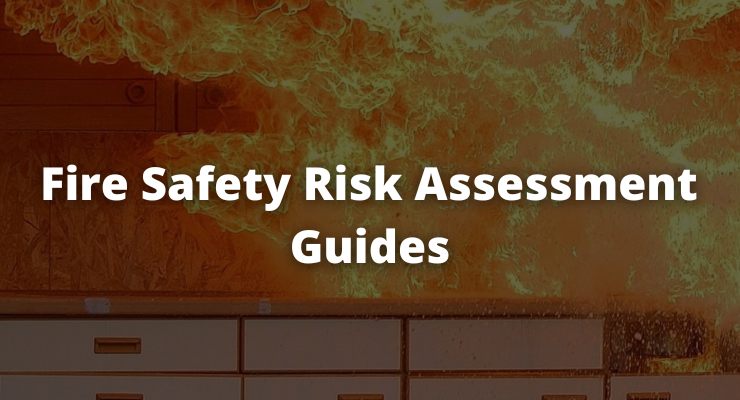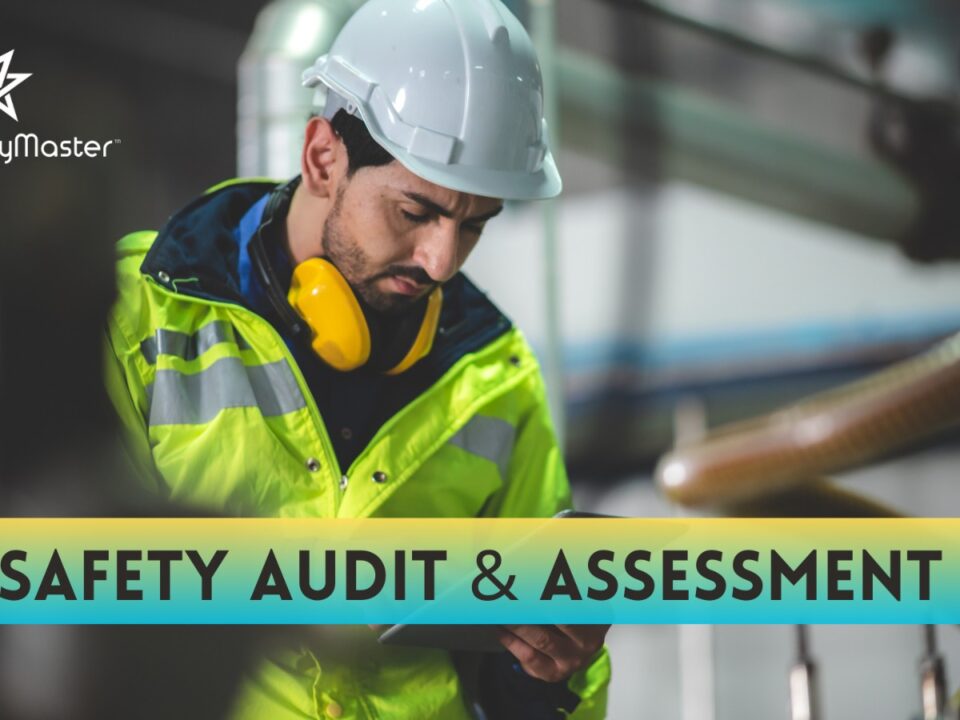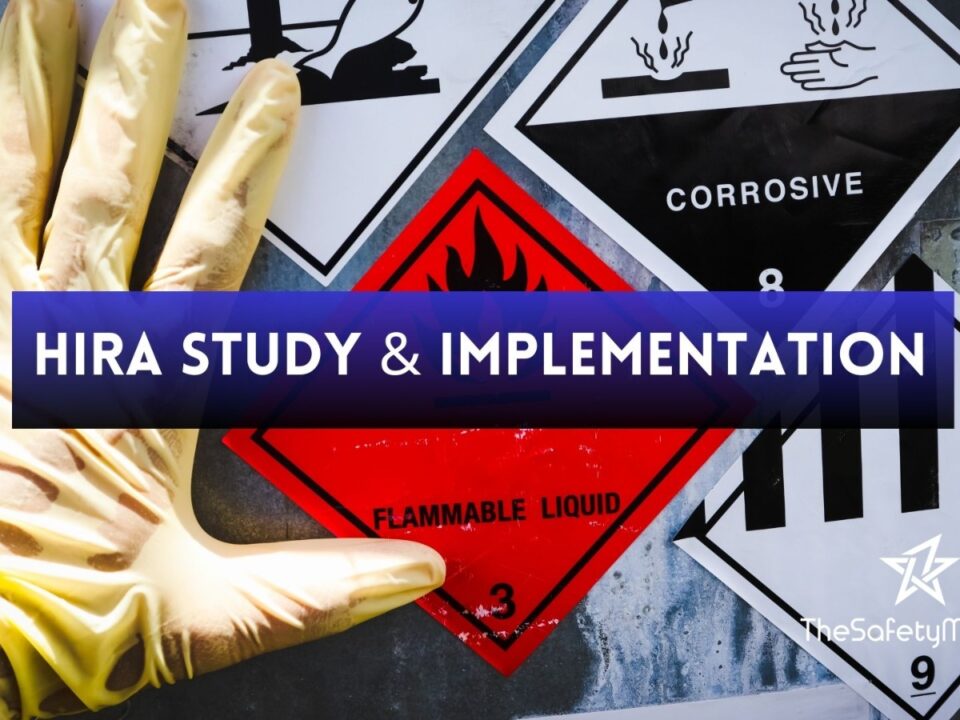Fire Risk Assessment by TheSafetyMaster

Best Safety Consultant in India TheSafetyMaster
August 28, 2023
Material Handling Safety Audit
September 1, 2023Fire safety is a matter of utmost importance, as the devastating effects of fires can be far-reaching and catastrophic. The ability to prevent, detect, and respond to fires effectively can save lives, protect property, and ensure business continuity. In this comprehensive article by TheSafetyMaster, we delve into the critical topic of Fire Risk Assessment – a systematic approach to identifying fire hazards and evaluating risks in order to implement appropriate measures for prevention and control.
Throughout this article, we aim to provide you with valuable insights and practical guidance on conducting an effective Fire Risk Assessment. We will explore the various steps involved in assessing fire hazards, evaluating safety measures and emergency procedures, as well as engaging employees in fire safety awareness. By the end of this reading, you will be equipped with a deeper understanding of how to mitigate fire risks effectively while fostering a culture of safety within your organization.
The Importance of Fire Risk Assessment
Fire risk assessment is an indispensable process that ensures the safety and well-being of individuals, as well as protects valuable assets. In a world where fire incidents can lead to catastrophic consequences, conducting thorough assessments becomes paramount. Such assessments help in identifying potential fire hazards, evaluating risks, and implementing effective preventive measures.
By undertaking a meticulous fire risk assessment, organizations not only comply with legal obligations but also demonstrate their commitment to fostering a safe environment. This proactive approach empowers businesses to create robust fire safety plans, thereby minimizing the likelihood of accidents and reducing the severity of their impact should they occur. In essence, investing time and effort in conducting comprehensive fire risk assessments is an investment in safeguarding lives and preserving property.
Understanding Fire Hazards and Risks
In order to conduct a comprehensive fire risk assessment, it is vital to have a deep understanding of fire hazards and risks. Fire hazards can vary depending on the nature of the building, its occupants, and the activities carried out within. Common fire hazards include flammable liquids or gases, faulty electrical systems, combustible materials, improper storage practices, and inadequate fire safety measures.
To accurately assess the risks associated with these hazards, it is crucial to consider factors such as the probability of a fire occurring and its potential consequences. This includes analyzing the likelihood of ignition sources coming into contact with flammable materials, as well as estimating how quickly a fire could spread throughout the building. Understanding the behavior of different types of fires and their potential impact on occupants is also essential.
By gaining a thorough understanding of fire hazards and risks, TheSafetyMaster helps organizations develop robust strategies for prevention and mitigation. Our expert team combines technical knowledge with practical experience to identify potential vulnerabilities and recommend effective solutions that ensure optimal levels of safety for your premises.
Step-by-Step Guide to conducting a Fire Risk Assessment
Conducting a comprehensive fire risk assessment is an essential step towards ensuring the safety of your premises and the people within it. This step-by-step guide will provide you with a systematic approach to effectively identify, evaluate, and manage fire hazards and risks.
To commence the fire risk assessment process, start by familiarizing yourself with the layout and structure of the building. Carefully examine each area, identifying potential fuel sources and ignition points. Take note of any flammable materials, electrical appliances, or poorly maintained equipment that could pose a fire hazard.
Next, assess the effectiveness and adequacy of existing fire safety measures installed within your premises. This includes fire alarms, extinguishers, sprinkler systems, emergency exits, evacuation routes, and signage. Ensure that all safety equipment is regularly inspected and well-maintained.
Moving forward with your evaluation, identify potential ignition sources such as faulty wiring or overloaded power sockets. Make sure to examine heating systems, machinery operations, cooking areas (if applicable), and any activities that involve open flames or high temperatures.
Furthermore, analyze your organization’s fire safety management practices by reviewing emergency procedures in place. Evaluate staff training programs on fire prevention and response protocols. Consider establishing clear responsibilities for key personnel involved in emergency situations to ensure efficient coordination during critical moments.
Raising awareness among employees is vital in fostering a culture of safety within your organization. Provide regular training sessions on general fire prevention measures like proper handling of flammable substances or safe storage practices. Encourage employees to report any potential hazards promptly.
Last but not least: remember
Assessing the Building Structure and Layout
When conducting a fire risk assessment, it is crucial to thoroughly evaluate the building’s structure and layout. The physical characteristics of a building can significantly impact its fire safety measures and potential risks. Begin by examining the construction materials used, paying particular attention to fire resistance ratings. Identify any potential weaknesses or vulnerabilities in the structural elements that could compromise its ability to withstand a fire.
In addition to assessing the structural integrity, consider the layout of the building in relation to fire safety. Analyze factors such as escape routes, access points, and compartmentation. Are there sufficient exits available for quick evacuation? Are corridors and stairwells unobstructed? Evaluate whether there are any areas where smoke or fire could easily spread due to poor compartmentalization. By carefully scrutinizing these elements, you can identify any areas that require improvement for enhanced fire safety.
Evaluating Fire Safety Measures and Equipment
When it comes to fire safety, having the right measures and equipment in place can mean the difference between a minor incident and a devastating catastrophe. Evaluating these crucial components is an essential part of any comprehensive fire risk assessment.
First and foremost, it is imperative to assess the effectiveness of fire detection systems installed within the premises. This includes checking that smoke detectors, heat detectors, and sprinkler systems are all functioning optimally. Regular maintenance and testing ensure their reliability when it matters most.
Equally important is evaluating the adequacy of fire extinguishers and suppression systems present in different areas of the building. Appropriate types of extinguishers should be available based on identified risks, such as water-based extinguishers for paper-based materials or CO2 extinguishers for electrical fires. Ensuring that these firefighting tools are accessible, properly maintained, and accompanied by clear instructions empowers employees to respond swiftly and effectively during an emergency.
Identifying Potential Ignition Sources
In order to effectively assess fire risks, it is crucial to identify all potential ignition sources within a building or premises. Ignition sources are objects, equipment, or conditions that can initiate a fire. By identifying and eliminating or mitigating these sources, the risk of a fire breaking out can be significantly reduced.
During the assessment process, one must pay meticulous attention to various areas where potential ignition sources may be present. This includes electrical equipment such as overloaded sockets or faulty wiring, heating systems and appliances that generate heat, open flames from candles or stoves, smoking areas, cooking facilities in commercial kitchens, flammable materials stored improperly or near heat sources, and even hazardous processes like welding or cutting.
Identifying these potential ignition sources requires a comprehensive examination of the entire premises. It involves thorough inspections of each area and meticulous observation to uncover any hidden hazards. By being diligent in this process and implementing necessary preventive measures like regular maintenance of electrical systems and proper storage protocols for flammable materials, businesses can ensure a safer environment for their employees and patrons alike.
Analyzing Fire Safety Management and Emergency Procedures
When it comes to fire safety, effective management and well-defined emergency procedures are paramount. Analyzing the existing fire safety management system in place is a critical step in ensuring a safe environment for all occupants. It involves examining the policies, protocols, and practices that govern fire safety within an organization.
The analysis delves into evaluating the comprehensiveness of fire safety policies, such as evacuation plans, fire drills, and communication protocols. It also assesses the adequacy of emergency exits, evacuation routes, signage, and assembly points. Additionally, an examination of training programs for employees regarding response actions during a fire emergency is crucial to developing an effective strategy.
By scrutinizing these aspects of fire safety management and emergency procedures, organizations can identify any gaps or deficiencies that may compromise their ability to respond swiftly and effectively during a fire incident. This analysis serves as a blueprint for improvement measures that enhance preparedness and reduce risks.
Engaging Employees and Raising Awareness
Engaging employees in fire safety practices is crucial to create a culture of awareness and preparedness within an organization. By nurturing a sense of responsibility for fire prevention, employees become active participants in mitigating potential risks.
One effective strategy to engage employees is through comprehensive fire safety training programs. These programs should not only cover the basics of fire prevention, but also provide practical hands-on training on how to operate firefighting equipment and how to respond swiftly and calmly during emergencies. Moreover, incorporating interactive elements, such as fire drills and simulations, can help familiarize employees with emergency evacuation procedures.
Raising awareness about fire risk assessment goes beyond training sessions. Regular communication through newsletters, posters, and safety bulletins can reinforce important information regarding potential hazards and risk mitigation strategies. Encouraging open dialogue between management and employees about fire safety concerns fosters a collaborative atmosphere where everyone feels responsible for maintaining a safe working environment.
When employees are actively engaged in fire risk assessment practices, they become valuable assets in identifying potential hazards or gaps in existing safety measures. Their input can help refine protocols or suggest improvements that may have been overlooked by management alone.
In summary, engaging employees and raising awareness instills a proactive mindset towards fire safety while fostering a strong sense of responsibility among all levels within an organization. By involving every employee as an active participant in the process, organizations can create safer work environments while promoting camaraderie and unity among their workforce.
Regular Review and Updating of Fire Risk Assessments
Ensuring the safety of a building from fire hazards is an ongoing process that goes beyond conducting a one-time assessment. To maintain an effective level of fire safety, it is crucial to regularly review and update the fire risk assessments. This proactive approach not only helps in identifying any changes in the building’s structure, layout, or operations but also ensures that adequate measures are in place to prevent potential fire risks.
Regular reviews allow us to stay vigilant and keep up with evolving safety standards and best practices in fire prevention. By revisiting and reassessing the fire risk assessment periodically, we ensure that all potential ignition sources are identified, existing control measures are sufficient, evacuation procedures are up-to-date, and employees are appropriately trained.
This commitment to regular review demonstrates a dedication to maintaining a safe environment for everyone within the building. It reinforces confidence among employees and visitors alike that their well-being is prioritized. It also fosters a culture of continuous improvement by constantly seeking ways to enhance fire safety measures.
Case Studies: Real-Life Examples of Effective Fire Risk Assessments
In this section, we will delve into real-life case studies that demonstrate the effectiveness and importance of conducting thorough fire risk assessments. These examples serve as a testament to how proactive measures can prevent devastating fires and ensure the safety of individuals and property.
Our first case study takes us to a bustling commercial office building in downtown Metropolis. The organization, equipped with a comprehensive fire risk assessment conducted by TheSafetyMaster, implemented several preventive measures. These included regular inspections of fire safety equipment, employee training on evacuation procedures, and installation of state-of-the-art sprinkler systems throughout the premises. Thanks to their meticulous preparation and swift response to an isolated electrical fire incident, they were able to swiftly evacuate all occupants safely while minimizing damage. This success story highlights the positive outcomes that can be achieved when organizations prioritize fire risk assessments as part of their safety protocols.
Conclusion
In conclusion, conducting a comprehensive fire risk assessment is an essential aspect of ensuring the safety and well-being of both employees and visitors within any establishment. This diligent process allows for the identification and mitigation of potential fire hazards, enabling proactive measures to be implemented to minimize the risk of fire incidents. By following the step-by-step guide provided in this article, organizations can create a safer environment that adheres to legal requirements and industry best practices. By prioritizing fire risk assessments, we can confidently protect lives and property, fostering a sense of security and peace of mind for all stakeholders involved.
With Best Wishes
Sanjeev Paruthi
TSM TheSafetyMaster® Private Limited
Unit No 221-451-452, SPL1/J, 2nd & 4th Floor, Sunsquare Plaza Complex, RIICO Chowk, Bhiwadi 301019, Rajasthan, India
Phone: +91 1493 22 0093
Mobile: +91 7665231743/9413882016
Email: info@thesafetymaster.com



